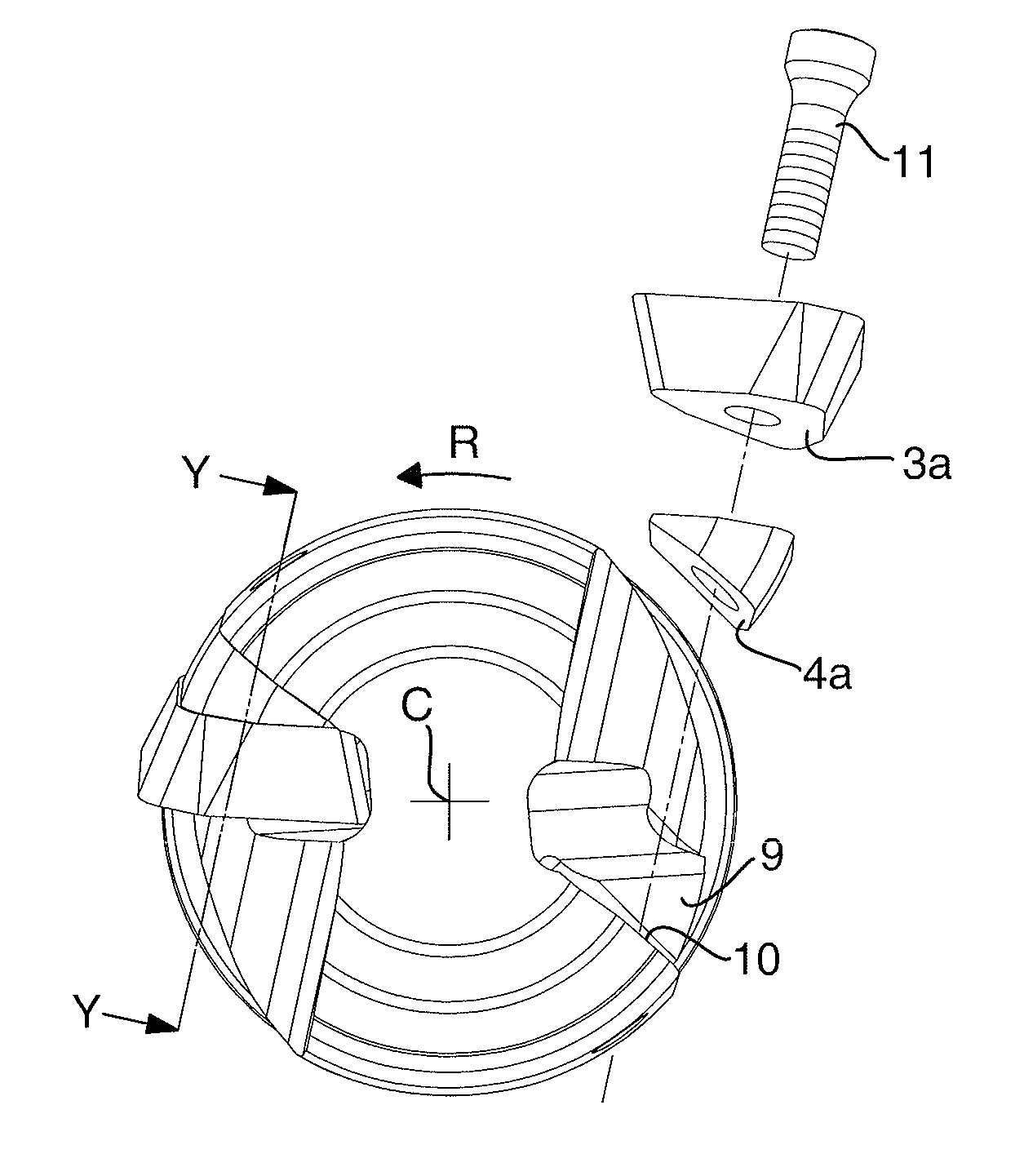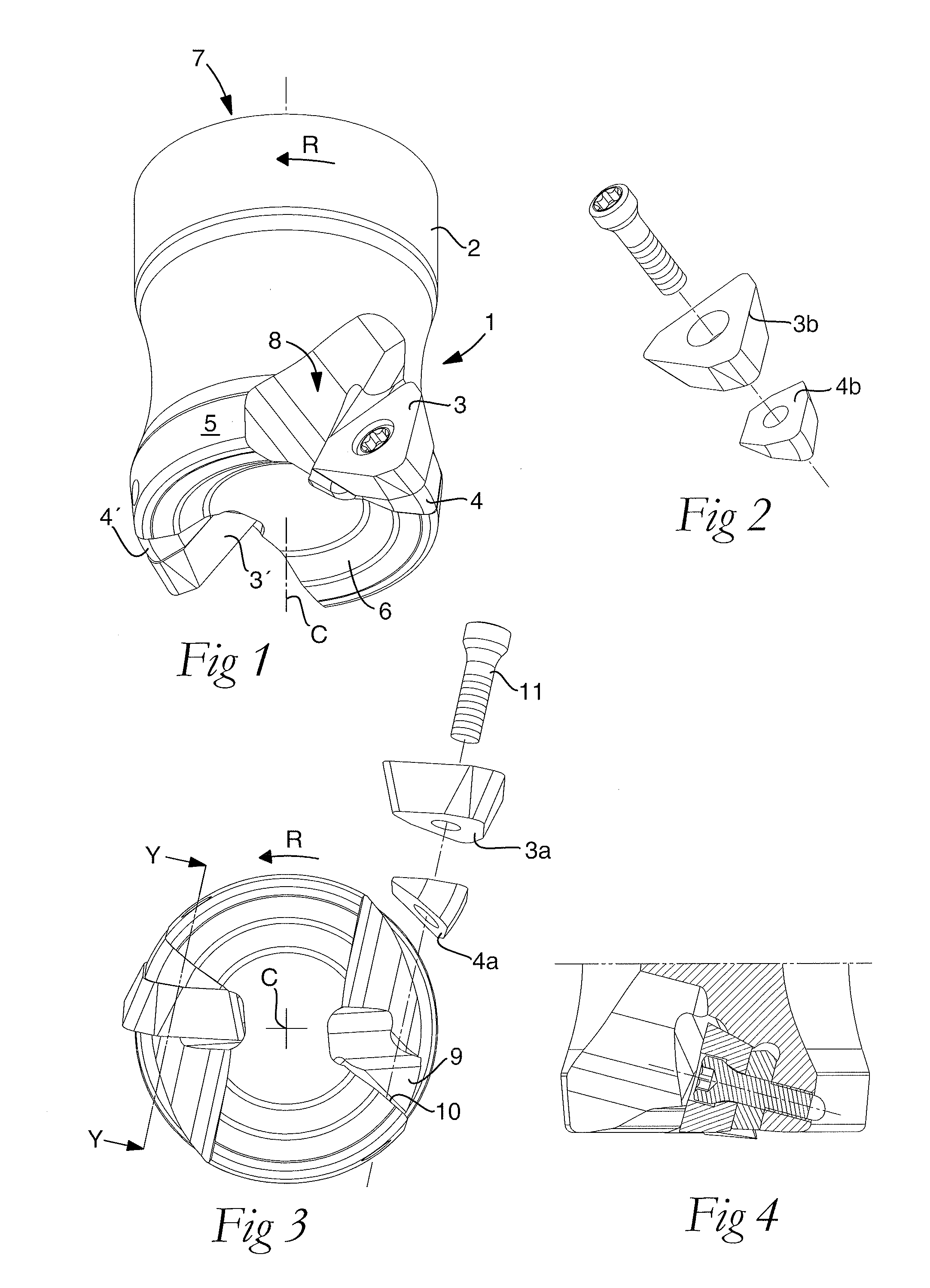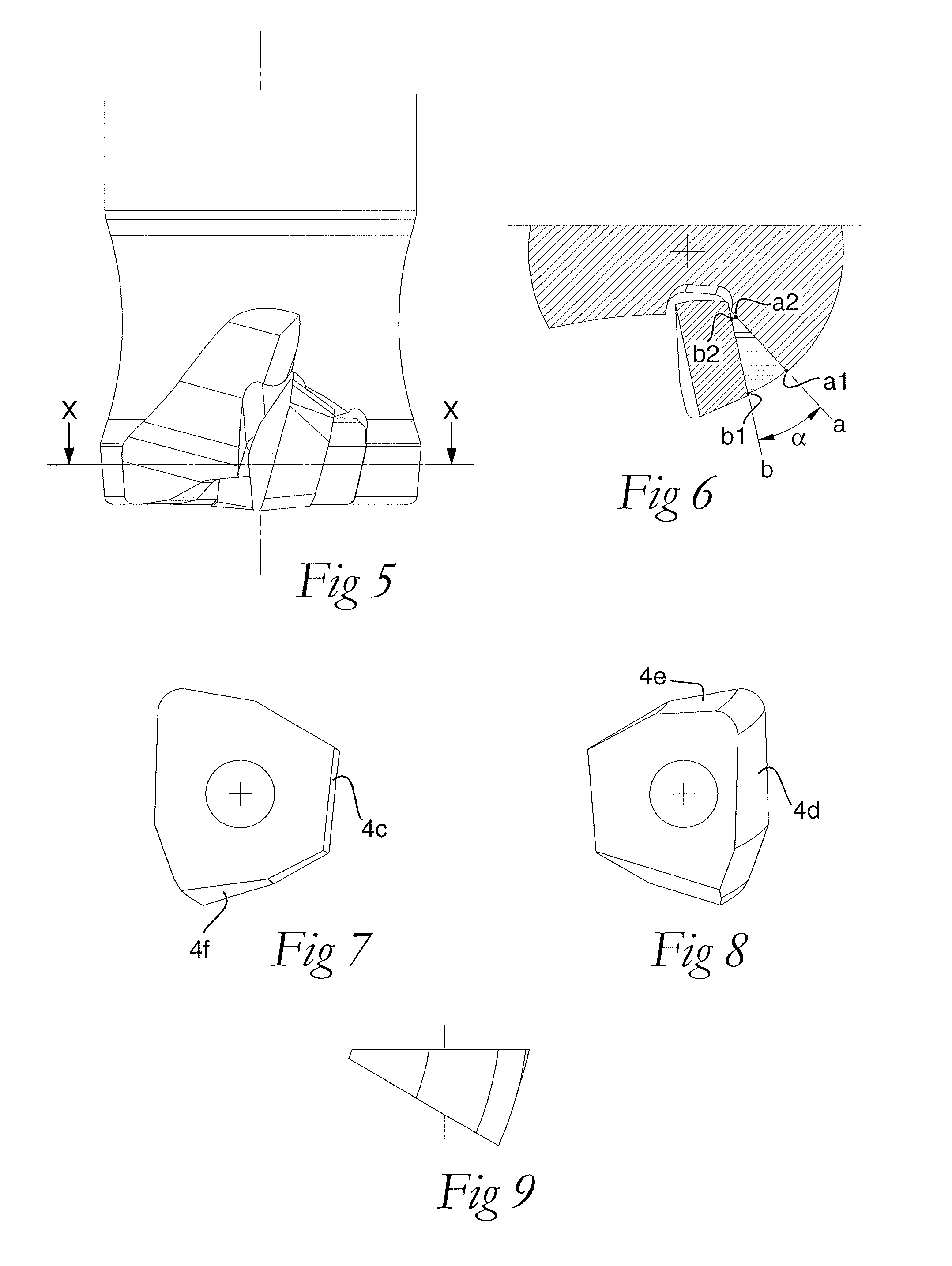Shim plate for tools for cutting machining as well as a tool
a technology of shim plate and tool, which is applied in the field of shim plate, can solve the problems of reducing and reducing the risk of serious damage to the basic body, so as to maintain the basic body, increase the service life of the cutting tool, and improve the strength of the basic body
- Summary
- Abstract
- Description
- Claims
- Application Information
AI Technical Summary
Benefits of technology
Problems solved by technology
Method used
Image
Examples
first embodiment
In FIGS. 1-9, the invention is shown. FIG. 1 shows an assembled cutting tool (1). The cutting tool includes a basic body (2) and one or more cutting inserts (3) each one of which co-operates with a shim plate (4). The basic body is rotatable in the direction of rotation R around a center axis C, hereinafter called the rotational axis of the basic body or only the rotational axis. The basic body has also a peripheral envelope surface (5) that is concentric with the rotational axis and that often but not necessarily is rotationally symmetric, and a front (6) and a rear end surface (7). Further, the basic body includes a number of chip pockets (8), which form indentations in the envelope surface as well as in the front end surface. In the chip pockets, insert seats (9) are arranged. Each insert seat includes a seat surface (10) to which a shim plate and a cutting insert can be mounted. Each cutting insert includes, among other things, a bottom surface (3a) and a main cutting edge (3b)....
third embodiment
Neither does the contact surface (4b) of the shim plate facing the bottom surface (3a) of the cutting insert need to be plane, but may, for example, include coupling means for the cutting insert (3) to be fixed better in relation to the shim plate (4). According to the invention, the contact surface of the shim plate facing the cutting insert has coupling means, which also in this case may be a serration surface or another connecting surface according to the above, where the bottom surface of the cutting insert adjacent to the shim plate co-operates with the contact surface of the shim plate. The bottom surface of the cutting insert is then provided with the corresponding coupling means.
According to an additional embodiment of the invention, schematically shown in FIG. 11, the shim plate (4) is wedge-shaped also in the axial direction, preferably in such a way that the thickness of the shim plate increases toward the front end surface (6). In this embodiment, an arbitrary cross-sect...
PUM
| Property | Measurement | Unit |
|---|---|---|
| angle | aaaaa | aaaaa |
| angle | aaaaa | aaaaa |
| setting angle | aaaaa | aaaaa |
Abstract
Description
Claims
Application Information
 Login to View More
Login to View More - R&D
- Intellectual Property
- Life Sciences
- Materials
- Tech Scout
- Unparalleled Data Quality
- Higher Quality Content
- 60% Fewer Hallucinations
Browse by: Latest US Patents, China's latest patents, Technical Efficacy Thesaurus, Application Domain, Technology Topic, Popular Technical Reports.
© 2025 PatSnap. All rights reserved.Legal|Privacy policy|Modern Slavery Act Transparency Statement|Sitemap|About US| Contact US: help@patsnap.com



